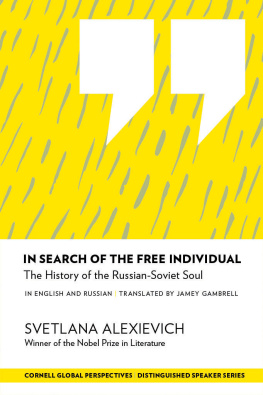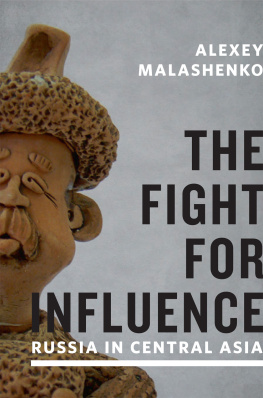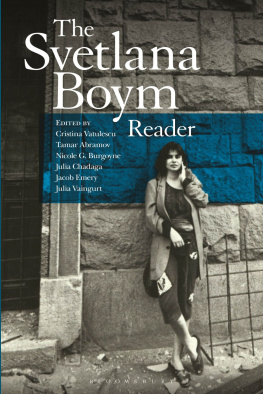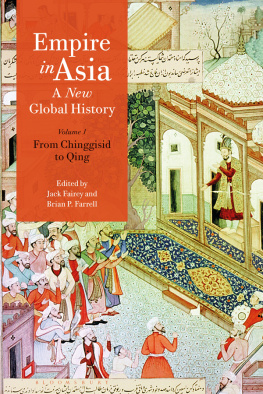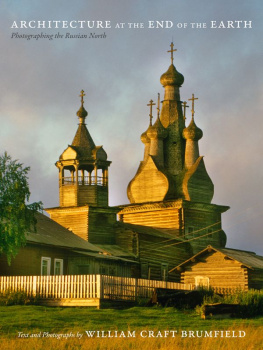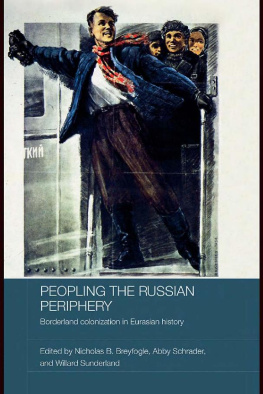Svetlana Gorshenina - Photographing Central Asia: From the Periphery of the Russian Empire to Global Presence
Here you can read online Svetlana Gorshenina - Photographing Central Asia: From the Periphery of the Russian Empire to Global Presence full text of the book (entire story) in english for free. Download pdf and epub, get meaning, cover and reviews about this ebook. year: 2022, publisher: De Gruyter, genre: Politics. Description of the work, (preface) as well as reviews are available. Best literature library LitArk.com created for fans of good reading and offers a wide selection of genres:
Romance novel
Science fiction
Adventure
Detective
Science
History
Home and family
Prose
Art
Politics
Computer
Non-fiction
Religion
Business
Children
Humor
Choose a favorite category and find really read worthwhile books. Enjoy immersion in the world of imagination, feel the emotions of the characters or learn something new for yourself, make an fascinating discovery.

- Book:Photographing Central Asia: From the Periphery of the Russian Empire to Global Presence
- Author:
- Publisher:De Gruyter
- Genre:
- Year:2022
- Rating:5 / 5
- Favourites:Add to favourites
- Your mark:
- 100
- 1
- 2
- 3
- 4
- 5
Photographing Central Asia: From the Periphery of the Russian Empire to Global Presence: summary, description and annotation
We offer to read an annotation, description, summary or preface (depends on what the author of the book "Photographing Central Asia: From the Periphery of the Russian Empire to Global Presence" wrote himself). If you haven't found the necessary information about the book — write in the comments, we will try to find it.
Svetlana Gorshenina: author's other books
Who wrote Photographing Central Asia: From the Periphery of the Russian Empire to Global Presence? Find out the surname, the name of the author of the book and a list of all author's works by series.
Photographing Central Asia: From the Periphery of the Russian Empire to Global Presence — read online for free the complete book (whole text) full work
Below is the text of the book, divided by pages. System saving the place of the last page read, allows you to conveniently read the book "Photographing Central Asia: From the Periphery of the Russian Empire to Global Presence" online for free, without having to search again every time where you left off. Put a bookmark, and you can go to the page where you finished reading at any time.
Font size:
Interval:
Bookmark:
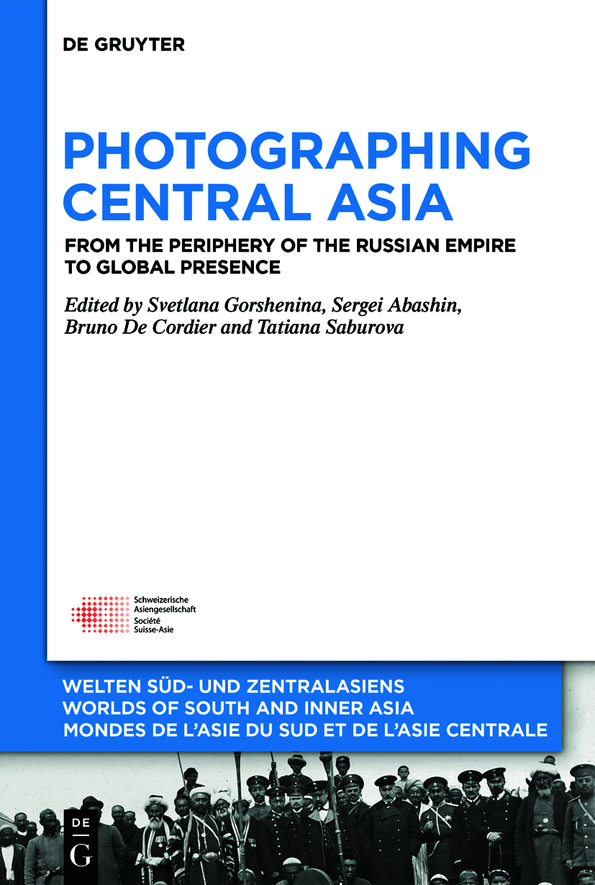
Welten Sd- und Zentralasiens / Worlds of South and Inner Asia / Mondes de lAsie du Sud et de lAsie Centrale
Im Auftrag der Schweizerischen Asiengesellschaft / On behalf of the Swiss Asia Society / Au nom de la Socit Suisse-Asie
Edited by
Volume
ISBN 9783110754421
e-ISBN (PDF) 9783110754469
e-ISBN (EPUB) 9783110754568
Bibliographic information published by the Deutsche Nationalbibliothek
The Deutsche Nationalbibliothek lists this publication in the Deutsche Nationalbibliografie; detailed bibliographic data are available on the Internet at http://dnb.dnb.de.
2022 with the authors, editing 2022 Svetlana Gorshenina, Sergei Abashin, Bruno De Cordier and Tatiana Saburova, published by Walter de Gruyter GmbH, Berlin/Boston
This work is licensed under the Creative Commons Attribution-NonCommercial-NoDerivatives 4.0 International License.
Note: Translated by Adelaide McGinity-Peebles
This volume is the outcome of the Another Turkestan: Undiscovered Photography of the Asian Periphery of the Russian Empire conference held in May 2019 at the European University in St Petersburg. still considered on the margins of the marginal in the history of photography?
a well-established if unhelpful dichotomy. Moreover, specific reasons that account for this marginal position can be found in the postcolonial context of the post-Soviet world. In Putins Russia, Central Asia has become increasingly invisible, gradually disappearing from the countrys programme of sociopolitical nation-building. The belated interest in and relative marginality of Central Asia as a topic of study has also been facilitated by the reduction of Russian specialists on the region and specialised programmes at Russian universities.
As for photography itself, university courses on the history of this medium rarely found in Russian higher education institutions barely touch on the history of photography in Turkestan, or on the more general topic of photography in colonial contexts. the main tendency, albeit with occasional exceptions, is a lack of desire to continue the Soviet tradition of studying the activities of the Russian imperial enlightenment. This reflects the decolonial tendencies in knowledge production increasingly perceptible in Central Asia.
Another factor is the distribution of research interests within Central Asian studies itself. Excluding archaeology and research on antiquity, the dominant focus in Central Asian studies is the sociopolitical conditions, as well as religious and national policies, within the republics themselves. Research on the various aspects of Central Asian culture is comparatively minimal, and for specialists within Central Asian cultural studies, the photography of Turkestan of the nineteenth and early twentieth centuries has largely been ignored or rejected in favour of Soviet-era photography.
hardly appears in Central Asian studies, although these approaches since the 1990s have allowed for the appearance of visual material in the humanities outside the disciplinary framework of art history. That events prior to the twentieth century are rarely researched by visual specialists compounds this. Moreover, all humanities-based research conducted on Central Asia that uses visual sources can be linked to visual studies. Thus, these visual specialists (who could be historians, anthropologists or art historians) as a rule conservatively interpret their tasks and the scope of the field. Multi- and inter-disciplinarity, though much desired, becomes almost unobtainable since the study of these multifaceted, complex visual data ultimately conforms to the researchers personal interests and disciplinary affiliation.
Difficulties in gaining access to source material is another problem. Photographs of Turkestan during this period are scattered across numerous museums, archives and library collections in Russia, beyond doubt, even if to date they remain unexplored. The very fact that these large collections are dispersed demonstrates that the photographic industry was as prosperous at the Turkestani periphery as it was at the Russian imperial centre, and furthermore that it was very successful in disseminating knowledge about the region to broad audiences.
Analysing these visual documents is undoubtedly a complex process. Perhaps this also explains why the number of historians who research the imperial photography of Central Asia is so small (no more than a dozen worldwide). These historians must reconstruct the complex relationship between sources, establish the most effective methodologies to investigate them, develop a language to describe the images and engage in wider theoretical debates about photography. They are thus engaged in active discussions that are marked both by a contradictory understanding of the regions colonial past and by tensions arising from the postcolonial discourse on the region.
Nonetheless, being on the margins of the marginal is hardly exclusive to the photography of Russian Turkestan. Other fringes of the Russian Empire, such as the Caucasus
While I adopt the notion of the margins of the marginal to describe the history of photography of Turkestan, I do not mean to describe it as a blind spot (angle mort), to borrow a term from the French geographer Alain Reynaud.), we find that scholarship on photography of Turkestan involves several different stages and publication types.
Turkestan first appears in 1953, albeit very sporadically, in a historical account of Russian art photography from its inception in 1839 to 1917 by the Soviet historian Sergei Morozov. In his earlier book Morozov also tries to give an extensive account of the first Russian traveller-photographers. Usually conceived of as albums, they only provide a rather fragmentary reconstruction of the historical context (despite being written by leading historians of the time). These authors do not analyse many important themes such as the biographies of the photographers, the conditions in which they worked, their objectives, their relationship with the local people photographed or, on a more general level, the role of photography as a modern technology in the colonial context.
This study of individual collections continued in the 2000s. Such works are often difficult to read but bear conscientious factual descriptions, and are frequently compiled as reference publications lacking any historical and political context. They nonetheless remain relevant in the absence of detailed catalogues of existing collections found beyond the walls of archival repositories. These works tend to take a linear-chronological approach in presenting the works of photographers and mapping the changes in legislation that impacted them (e.g. on copyright, periodicals, photographic societies, exhibition activities) and defined the framework for the development of photography in the Russian Empire. However, they rarely, if ever, engage in any analytical reflection.
However, some changes are occurring in this field of study. Numerous, largely analytical works devoted to Alexander Kuhns (18401888) Turkestan Album
Alongside this trend in studying collections, though it has unfolded rather sporadically since the 1970s, many works have focused on individual photographers who worked in Turkestan. In particular, these pay attention to major figures such as Samuel Dudin (18631929)
Font size:
Interval:
Bookmark:
Similar books «Photographing Central Asia: From the Periphery of the Russian Empire to Global Presence»
Look at similar books to Photographing Central Asia: From the Periphery of the Russian Empire to Global Presence. We have selected literature similar in name and meaning in the hope of providing readers with more options to find new, interesting, not yet read works.
Discussion, reviews of the book Photographing Central Asia: From the Periphery of the Russian Empire to Global Presence and just readers' own opinions. Leave your comments, write what you think about the work, its meaning or the main characters. Specify what exactly you liked and what you didn't like, and why you think so.


